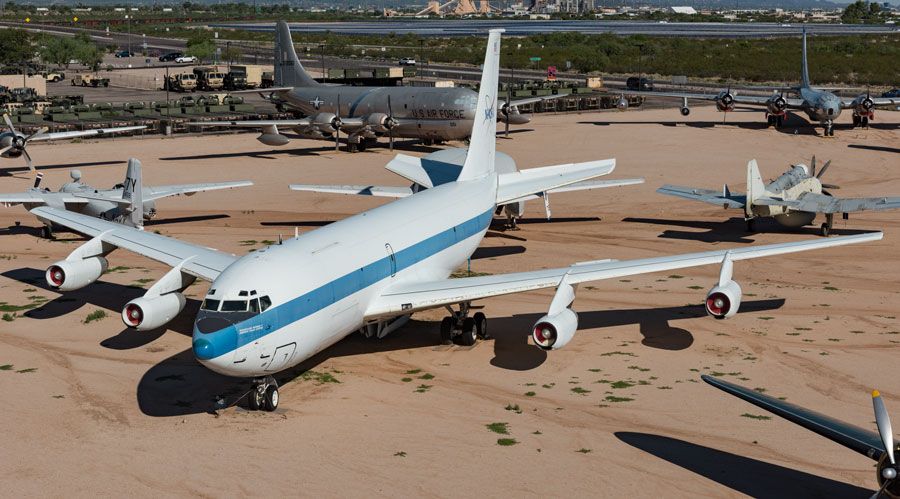Boeing KC-135A Stratotanker
Developed from the Model 367-80 airliner prototype, the KC-135 and 707 are two of Boeing’s most famous products. The KC-135 was designed based on an Air Force requirement for a high-speed jet tanker capable of refueling the then latest-generation of jet fighters and bombers. The KC-97s then in use required the jets to fly at very low speeds while the tanker struggled to fly as fast as possible. The KC-135 allowed both the tanker and the receiver aircraft to fly comfortably in the middle of their flight envelopes rather than at the edges. The first and most numerous version of the Stratotanker is the KC-135A. More than 700 KC-135As were built between 1956 and 1965. The KC-135 has proven itself to be a very versatile aircraft with many being modified for special test programs, as airborne command posts, and as VIP transports. Modernized KC-135As remain the primary tanker aircraft for the U.S. Air Force more than 50 years after their introduction to service.
The KC-135A on display is one of the many that have gone on to new lives after their time as Air Force tankers. Delivered to the Air Force in 1963, the aircraft served as a tanker for thirty years before being given to NASA for use in its Reduced Gravity Research Program. Flying a large parabolic arc allows the simulation of zero-gravity as well as Lunar and Martian gravity. The plane would usually make as many as 40 climbs and dives during a normal mission. The constant roller-coaster effect helped to give the aircraft its unofficial nickname “Vomit Comet.” Although most famous for its role in training astronauts, more than 80% of its flights were dedicated to scientific experiments which needed low gravity. Since joining the program in 1995, this aircraft has flown 34,757 parabolas giving over 18,000 passengers a taste of weightlessness, including over 400 teams of college students and their experiments.
Wingspan | 130 ft 10 in. |
Length | 136 ft 3 in. |
Height | 38 ft 4 in. |
Weight | 297,000 lbs (loaded) |
Maximum Speed | 585 MPH |
Service Ceiling | 50,000 ft |
Range | 3,000 miles |
Engines | Four Pratt & Whitney J57P-59W turbojets with 13,740 pounds of thrust each |
Crew | 4 |
Manufacturer
Boeing
Markings
National Aeronautics and Space Administration, 2004
Designation
KC-135A “Weightless Wonder V”
Registration
N931NA
Serial Number
63-7998
